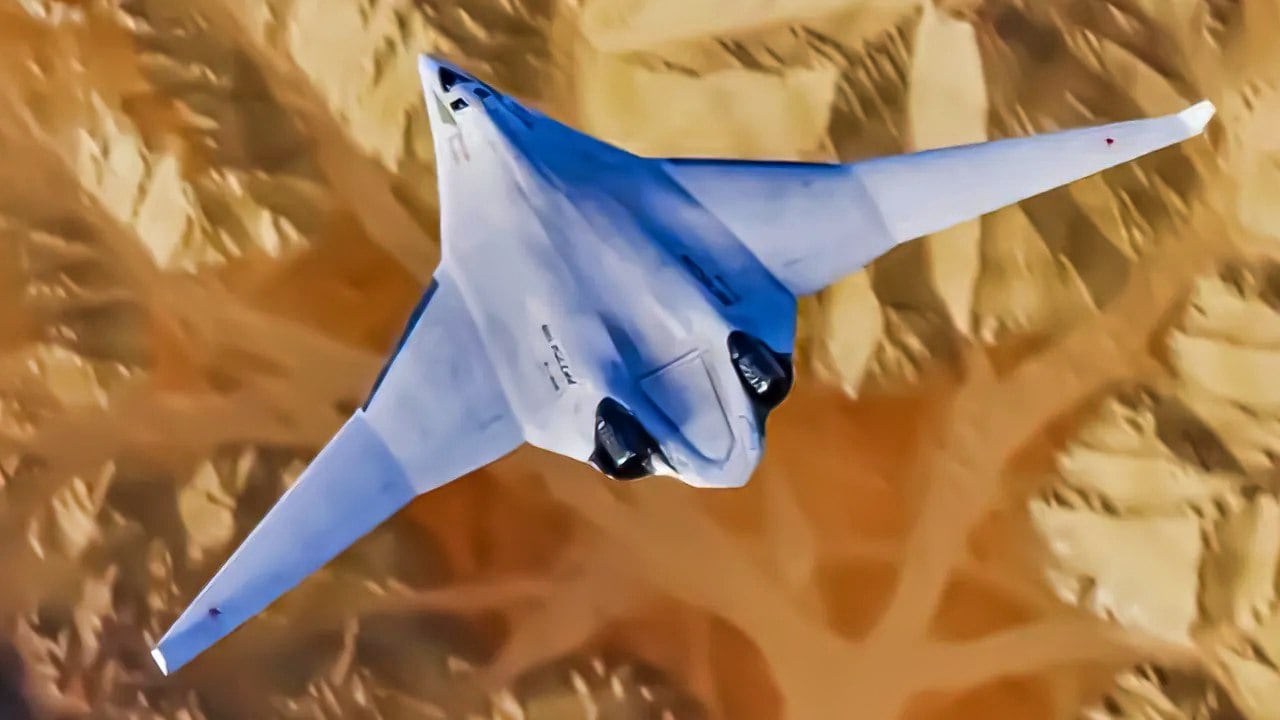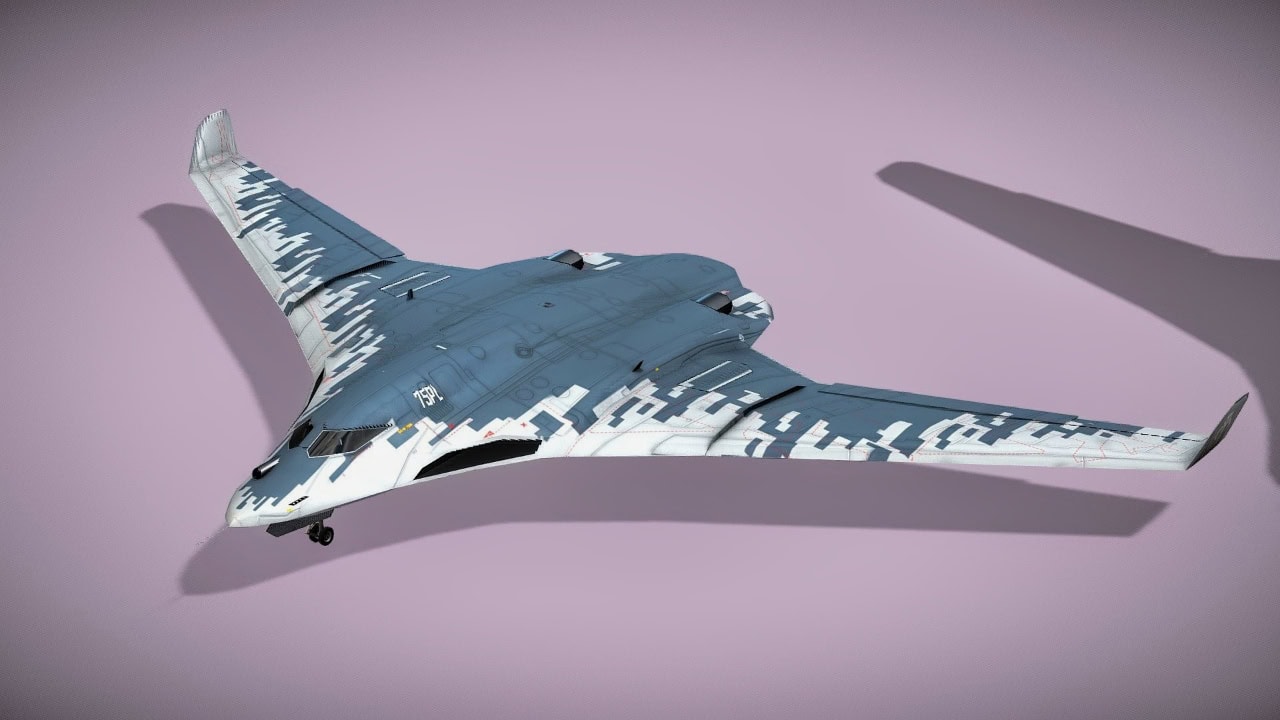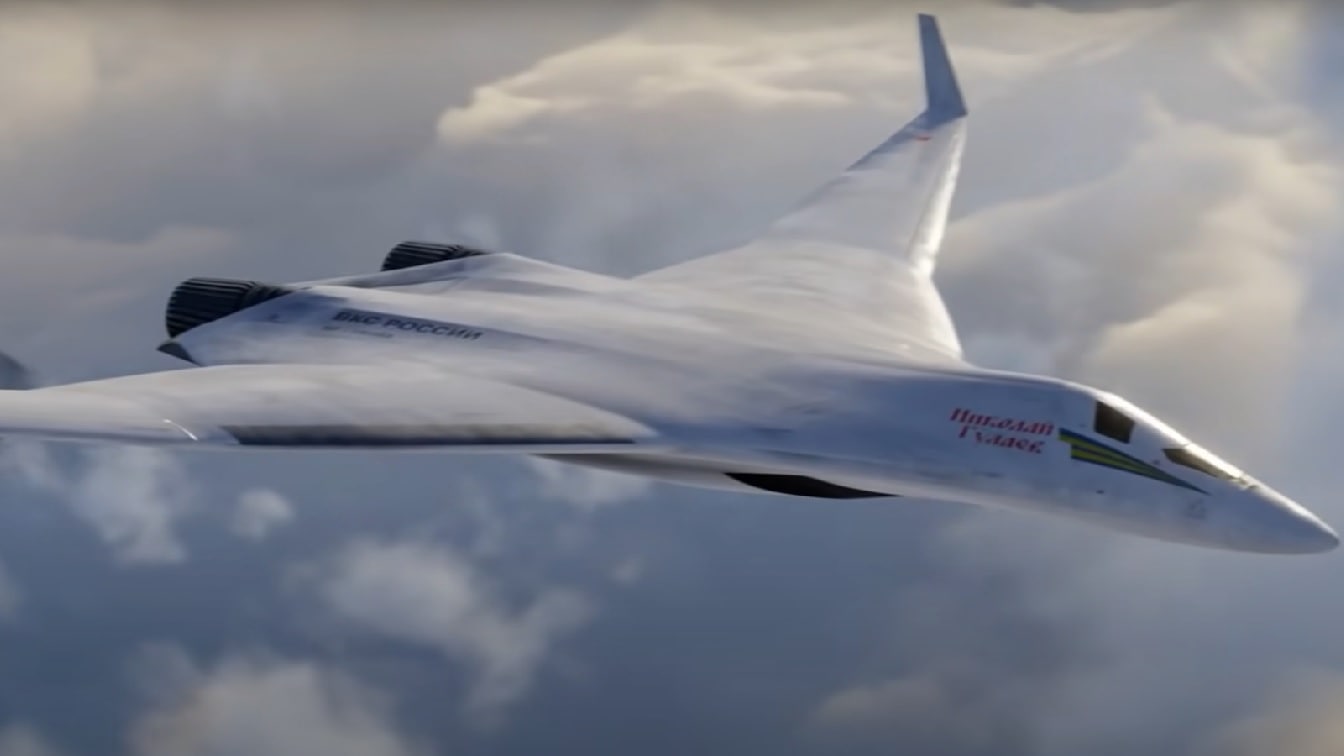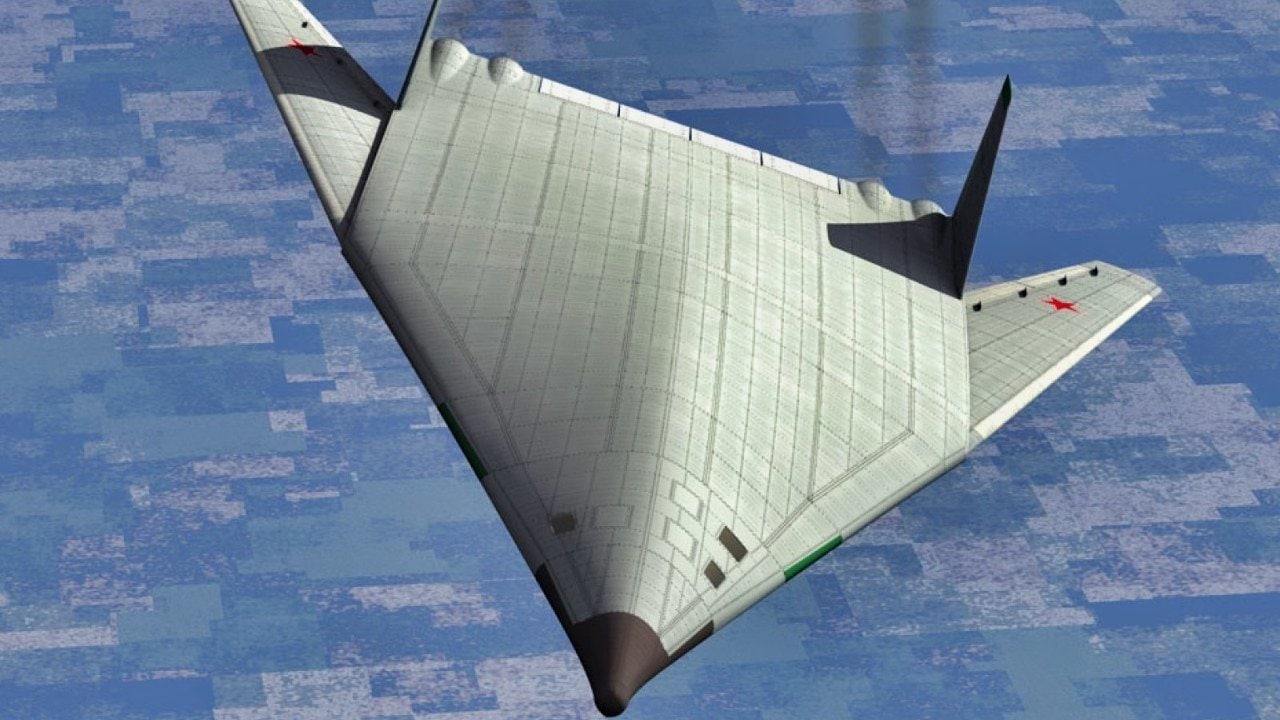The Tupolev PAK DA: Russia’s High-Stakes Gambit for a New Era of Strategic Airpower
Introduction: The Dawn of a New Bomber Era
The Tri-Polar Strategic Challenge – In the unfolding landscape of 21st-century geopolitics, the strategic bomber has re-emerged as a paramount symbol and instrument of global power.
A new, high-stakes arms race is underway, defined not by the sheer numbers of the Cold War but by the technological sophistication of low-observable, or “stealth,” platforms capable of holding any target on the globe at risk.
This contest is dominated by three principal actors: the United States, with its operational Northrop Grumman B-2 Spirit and its successor, the B-21 Raider, now in flight testing; the People’s Republic of China, with its developing Xian H-20; and the Russian Federation.
It is into this formidable arena that Russia projects its own next-generation contender: the Tupolev PAK DA.
This report is a comprehensive look at the PAK DA, pulling together all available information into one, comprehensive analysis.
Ambition vs. Reality
The Tupolev PAK DA (an acronym for Perspektivnyi Aviatsionnyi Kompleks Dalney Aviatsii, or “Prospective Aviation Complex for Long-Range Aviation”), officially codenamed Poslannik (Envoy), represents a monumental and necessary doctrinal shift in Russian military aviation.
The program signals a decisive break from the Soviet-era emphasis on supersonic speed as the primary means of survival, embracing instead a modern paradigm that prioritizes stealth, extended range, and the use of advanced standoff weaponry.
This ambitious vision, however, is tethered to a starkly different reality. The PAK DA program is fundamentally constrained by a cascade of formidable and interconnected obstacles: deep-seated technological deficits in critical areas like stealth materials and microelectronics, a beleaguered and under-resourced industrial base, the crippling effect of sustained international sanctions, and the immense resource drain of the ongoing war in Ukraine.
The PAK DA is, therefore, more than a military hardware project; it is a high-stakes test of the modern Russian state’s ability to conceive, fund, and execute a technologically revolutionary program on par with its global rivals under conditions of unprecedented and sustained pressure.
Its trajectory will serve as a crucial bellwether for the future of Russia’s high-tech defense sector and its standing as a top-tier military power.
From ‘Blackjack’ Successor to ‘Spirit’ Competitor: A Doctrinal Evolution
Post-Soviet Origins and Supersonic Dreams – The conceptual genesis of a next-generation Russian bomber dates to the late 1990s, with the first formal technical and tactical requirements being issued to the venerable Tupolev Design Bureau in 2007 and program financing commencing in 2008.
Early concepts for the PAK DA were heavily influenced by Russia’s existing bomber doctrine, which prized speed and altitude. Initial plans envisioned a platform heavily based on an evolution of the supersonic Tupolev Tu-160 “Blackjack,” a swing-wing strategic bomber that remains the heaviest and fastest of its kind.
This approach reflected a deeply ingrained Soviet-era philosophy that high speed was a key component of a bomber’s survivability, allowing it to dash through or outrun enemy defenses.
The Subsonic Pivot: Acknowledging a New Reality
By 2013, the program underwent a profound and decisive transformation. The Russian Defence Ministry announced that the selected design for the PAK DA would be a subsonic “flying wing,” explicitly abandoning the pursuit of supersonic speed in favor of low observability (stealth), extended range, and greater payload capacity.
PAK DA Russian Stealth Bomber. Russian State Media.

PAK DA Russian Bomber. Image Credit: Creative Commons.

PAK DA Stealth Bomber Russia.
This pivot represented a fundamental change in Russian strategic thought, an implicit acknowledgment that in the face of modern, sophisticated Integrated Air Defense Systems (IADS), stealth had become a more viable survival mechanism than speed. The new design paradigm drew clear inspiration from the only operational stealth bomber at the time, the American B-2 Spirit, signaling Russia’s intent to compete directly in the domain of low-observable technology.
This doctrinal shift and the concurrent decision to restart production of the modernized supersonic Tu-160M2 are two sides of the same coin, revealing a pragmatic, if reluctant, admission by the Russian military establishment of its technological and financial limitations.
The immense cost and complexity of developing a platform that is both supersonic and truly stealthy—a challenge that led the United States to field separate B-1 and B-2 bombers—likely proved insurmountable. This dual-track approach represents a strategic compromise: the Tu-160M2 addresses the continuing need for a modern supersonic standoff platform, freeing the PAK DA to focus exclusively on the technically demanding challenge of achieving stealth.
A History of Shifting Timelines
The PAK DA’s development has been characterized by a consistent pattern of ambitious announcements followed by significant and repeated delays. Initial projections in the late 2000s and early 2010s suggested a first flight between 2015 and 2019, with serial production beginning as early as 2023.
However, this schedule has slipped continuously. The projected first flight was pushed to 2023, then to 2024, and is now tentatively slated for 2025 at the earliest.
Consequently, the start of serial production has been postponed to 2027-2030, with many Western analysts believing even this timeline is optimistic.

PAK DA stealth bomber. Image Credit: Artist Render.
These persistent delays were a primary driver behind the 2015 decision to restart production of the Tu-160 as the modernized Tu-160M2, a crucial stopgap measure to ensure Russia’s Long-Range Aviation branch did not suffer a critical capability gap while awaiting the PAK DA.
Anatomy of the ‘Poslannik’: Technical Specifications and Core Technologies
Airframe and Design Philosophy – The PAK DA is based on a “flying wing” aerodynamic configuration, a design inherently suited for reducing an aircraft’s radar cross-section (RCS) by eliminating the large, reflective vertical and horizontal tail surfaces of a traditional airframe.
Renderings and mock-ups depict a design featuring blended wing-body construction, with engine intakes seamlessly integrated into the upper fuselage to shield them from ground-based radar.
The design is heavily inspired by the U.S. B-2 Spirit and B-21 Raider, which have established the flying wing as the optimal shape for a penetrating stealth bomber.
The following table consolidates the most frequently cited projected specifications for the PAK DA, drawn from a combination of official statements, state media reports, and expert analysis.
|
Characteristic |
Projected Specification |
|
Design |
Subsonic Flying Wing |
|
Crew |
4 |
|
Max Takeoff Weight |
145 tonnes |
|
Payload Capacity |
30-35 tonnes |
|
Propulsion |
2 x “Izdeliye RF” / NK32-02 derivative turbofans |
|
Speed |
Subsonic, ~800 km/h (Mach 0.65) cruise |
|
Range |
12,000 km – 15,000 km |
|
Endurance |
Up to 30 hours |
|
Service Ceiling |
~20,000 m (65,600 ft) |
Propulsion: The ‘Izdeliye RF’ Engine
Powering the PAK DA is a new engine, reportedly designated “Izdeliye RF” (Product RF), developed by the UEC-Kuznetsov company.
This powerplant is understood to be a non-afterburning derivative of the powerful NK-32 Tier 2 engine used on the modernized Tu-160M2 bomber, but heavily optimized for subsonic fuel efficiency to achieve the bomber’s demanding range and endurance requirements.
Development has been underway for several years, with reports of prototypes beginning bench tests in late 2020 and continuing through 2022.
Key design goals for the engine are not only performance but also extreme resilience, with specifications calling for a long service life of 12 to 21 years and the ability to operate in harsh environments and withstand the electromagnetic and thermal effects of a nuclear explosion.
The Stealth Conundrum: Coatings vs. Composites
A critical examination of Russia’s approach to stealth technology reveals what may be the PAK DA’s most significant vulnerability. Abundant evidence suggests that Russian industry continues to rely on applying external radar-absorbent material (RAM) coatings and appliques to an aircraft’s surface after the primary structure is built.
This technique stands in stark contrast to the more advanced and effective Western method, used in platforms like the B-2 and B-21, where stealth properties are “baked in” to the airframe itself through the use of specialized, structurally integrated composite materials.
This technological gap is a core challenge for the PAK DA program.
External coatings are generally less effective across the broad spectrum of radar frequencies, less durable in harsh operational conditions, and create significant, time-consuming maintenance burdens—all factors that could compromise the bomber’s survivability and operational availability.
“Sixth-Generation” Aspirations: Avionics, EW, and AI
Despite these underlying technological challenges, the PAK DA is being officially marketed by Russia as a “sixth-generation” platform.
This branding is used to associate the bomber with a suite of next-generation capabilities. These include claims of a highly automated cockpit to reduce crew workload, a powerful new electronic warfare (EW) suite designed to jam and suppress enemy air defenses, and full network-centric warfare capabilities allowing it to share data across the battlespace.12
More speculative claims about its future potential include the ability for unmanned operation, the integration of artificial intelligence (AI) for mission management, “loyal wingman” drone-teaming, and even the future installation of directed-energy laser weapons for defense or anti-satellite missions.
The stark contrast between these ambitious “sixth-generation” claims and Russia’s documented struggles with fundamental “fifth-generation” technologies, such as integrated stealth composites, suggests a significant propaganda dimension to the PAK DA program. The “sixth-gen” label appears to be a strategic messaging tool aimed at projecting technological parity with the American B-21 Raider, regardless of the underlying technical reality.
The Standoff Arsenal: Armament, Mission Profile, and Strategic Role
Doctrine of the Standoff Bomber – The PAK DA’s design and intended armament point toward a primary mission profile as a long-range, high-payload “missile truck”.
Its operational concept appears to de-emphasize deep penetration into heavily contested airspace, a mission reserved for platforms with assured, all-aspect stealth like the B-21. Instead, the PAK DA is designed to operate from the relative safety of permissive or semi-permissive airspace, using its vast payload and long range to launch salvos of advanced standoff weapons from hundreds or thousands of kilometers away.
This doctrine is a direct reflection of the potential limitations in its own stealth capabilities; it leverages Russia’s acknowledged strengths in advanced missile technology to compensate for potential weaknesses in stealth airframe manufacturing.
The survivability of the mission is thus transferred from the platform itself to the long-range, high-speed weapons it carries.
A Formidable Internal Payload
A defining feature of the PAK DA is its massive internal weapons bay, designed to accommodate a payload of 30 to 35 tonnes. This capacity significantly exceeds that of the B-2 Spirit (approx. 20 tonnes) and the B-21 Raider (projected at approx. 15 tonnes), allowing the PAK DA to carry an unparalleled arsenal of Russia’s most advanced strategic munitions.
|
Weapon Category |
Specific Munitions (estimated based on current data available |
|
Hypersonic Missiles |
Kh-47M2 Kinzhal derivatives; Kh-95 (newly developed for PAK DA) |
|
Long-Range Cruise Missiles |
Kh-101/Kh-102 (conventional/nuclear stealthy cruise missiles); Kh-555; new Kh-BD (reported 6,500 km range) |
|
Precision-Guided Bombs |
Various guided bombs for conventional strike |
|
Self-Defense Missiles |
Reports indicate the planned inclusion of air-to-air missiles, a departure from previous Russian bomber designs |
Speculative Missions: Anti-Satellite (ASAT) and Space Control
Adding a potentially destabilizing dimension to its strategic role are reports that the PAK DA could be tasked with counter-space missions.
This capability could manifest in several ways, from launching kinetic direct-ascent anti-satellite (ASAT) missiles to employing onboard directed-energy weapons, such as lasers, to “dazzle” or permanently disable the sensitive optical sensors of low-earth orbit (LEO) reconnaissance and communication satellites.
If realized, this would transform the PAK DA from a purely terrestrial strike platform into a tool of space warfare, capable of blinding an adversary’s critical space-based intelligence and communication networks at the outset of a conflict.
A Program Under Siege: Sanctions, Industrial Limits, and the Shadow of War
The Sanctions Bite – The PAK DA program has been developing under the shadow of Western sanctions for its entire existence, with restrictions intensifying dramatically following the 2022 invasion of Ukraine. These sanctions have severely restricted Russia’s access to the critical dual-use technologies indispensable for a modern aerospace program.
This includes high-performance microelectronics and processors for avionics and flight control computers, precision machine tools required for manufacturing components to exacting tolerances, and the precursor chemicals and materials needed to produce advanced composites and radar-absorbent coatings.
While Russia has sought to circumvent these restrictions through alternative sourcing and developing indigenous substitutes, the sanctions have undeniably slowed progress and limited the technological ceiling of the program.
Russia’s Ailing Industrial Base – Beyond external pressures, the program is hampered by long-standing internal weaknesses within Russia’s defense-industrial base. Key design bureaus like Tupolev have suffered from a “brain drain” and a shortage of engineers with the highly specialized skills needed for a project of this complexity, particularly in areas like flight control software for an unstable flying wing design.
Furthermore, production facilities, including the Kazan Aircraft Plant (KAPO) designated for final assembly and the Kuznetsov engine plant, reportedly suffer from outdated machinery and shortfalls in the resources needed for series production of such an advanced aircraft.
The Paradox of the Ukraine War – The ongoing war in Ukraine has created a dual, conflicting pressure on the PAK DA program. On one hand, the conflict has dramatically increased the urgency for the bomber. Successful Ukrainian drone strikes on airbases deep inside Russia have exposed the vulnerability of the legacy Tu-95 and Tu-22M3 bomber fleets, highlighting the critical need for a more survivable, modern strategic platform.
On the other hand, the war is consuming a vast proportion of Russia’s defense budget, industrial capacity, and material resources, diverting them away from long-term, capital-intensive R&D projects like the PAK DA toward the immediate needs of the battlefield.
The program is thus caught in a vicious cycle: the very events that prove its necessity are the same events that make its timely completion less likely by strangling the required resources. This strategic trap poses a significant long-term challenge to the modernization of Russia’s strategic air arm.
The Competitive Landscape: A Tri-Polar Bomber Race
PAK DA vs. B-21 Raider: A Clash of Philosophies – A direct comparison between the PAK DA and its primary American competitor, the B-21 Raider, reveals two fundamentally different approaches to the challenge of 21st-century strategic strike.
The B-21 Raider is conceived as a true penetrating strike platform. Its design prioritizes all-aspect, broadband stealth and an advanced sensor suite, enabling it to survive deep within the most heavily defended enemy airspace. This allows it to deliver smaller, more numerous, and less expensive direct-attack munitions with high precision, making it a cost-effective tool for dismantling an enemy’s warfighting infrastructure from within.
The PAK DA, in contrast, is emerging as a standoff strike platform. Its design prioritizes immense payload capacity and intercontinental range. It is intended to function as a survivable “magazine,” launching hypersonic and very-long-range cruise missiles from the periphery of contested airspace.
This doctrine leverages Russia’s lead in missile technology to hold targets at risk without requiring the bomber itself to face the most advanced layers of enemy air defense.
|
Comparative Metric |
Tupolev PAK DA (Projected) |
Northrop Grumman B-21 Raider (Projected) |
|
Primary Doctrine |
Standoff Missile Carrier |
Penetrating Striker |
|
Payload Capacity |
30-35 tonnes |
~15 tonnes |
|
Key Armament |
Hypersonic Missiles, Long-Range Cruise Missiles |
Direct-Attack Bombs, Standoff Munitions |
|
Stealth Technology |
External RAM Coatings/Appliques |
Integrated Structural Composites |
|
Development Status |
Prototype Construction, Delayed |
Flight Testing, Initial Production |
Strategic Implications for NATO and Global Security
The introduction of a hypersonic-armed PAK DA would significantly alter the strategic threat landscape. Hypersonic weapons, with their combination of extreme speed and maneuverability, compress defensive decision-making timelines and challenge the effectiveness of existing missile defense architectures.
Even a small fleet of PAK DAs, operating as part of a modernized nuclear triad alongside the Tu-160M2 and new generations of ICBMs and SLBMs, would provide Russia with a more flexible, survivable, and potent strategic deterrent.
Outlook: A Future Threat or a Paper Plane?
Synthesizing Potential and Pitfalls – The Tupolev PAK DA program is a study in contrasts. On paper, it represents a formidable future threat: a long-range, high-endurance bomber with an enormous payload of Russia’s most advanced conventional and nuclear standoff weapons. In practice, its development is beset by profound and persistent challenges spanning technology, industrial capacity, and geopolitics.
The reality of the PAK DA is likely to fall somewhere between the Kremlin’s ambitious proclamations and the most skeptical Western assessments. It is neither a guaranteed super-weapon nor mere “vaporware.”
A Realistic Projection – The official timeline projecting serial production by 2027-2030 appears highly improbable given the program’s history of delays and the compounding pressures of sanctions and war. A more realistic scenario involves a continued, slow-burn development cycle, with a potential entry into service in very limited numbers in the mid-to-late 2030s. The most likely outcome is not a one-for-one replacement of the entire legacy fleet, but rather the production of a small, elite squadron of PAK DA bombers.
These aircraft would serve as a niche, high-end capability reserved for the most critical strategic tasks, while modernized Tu-160M2s and life-extended Tu-95s continue to form the backbone of Russia’s Long-Range Aviation for the foreseeable future.
Final Assessment
The PAK DA Poslannik is the physical embodiment of Russia’s 21st-century strategic ambitions and its accompanying limitations.
While its final form, operational numbers, and ultimate service entry date remain shrouded in uncertainty, the doctrine it represents is clear and enduring.
Russia’s strategic aviation is firmly committed to a future centered on long-range, high-speed standoff attack. Therefore, Western defense planners must prepare for the advanced weapon systems the PAK DA is designed to carry—particularly long-range cruise and hypersonic missiles—even if the bomber platform itself remains a distant and uncertain prospect.
In the modern strategic equation, the threat is increasingly defined by the missile as much as, if not more than, the plane that carries it.
About the Author: Harry J. Kazianis
Harry J. Kazianis (@Grecianformula) is a national security expert based in Orlando, Florida. Kazianis was Senior Director of National Security Affairs at the Center for the National Interest (CFTNI), a foreign policy think tank founded by Richard Nixon based in Washington, DC. He also served as Executive Editor of its publishing arm, The National Interest. Harry has over a decade of experience in think tanks and national security publishing. His ideas have been published in the NY Times, Washington Post, Wall Street Journal, CNN, and many other outlets worldwide. He has held positions at CSIS, the Heritage Foundation, the University of Nottingham, and several other institutions related to national security research and studies.



